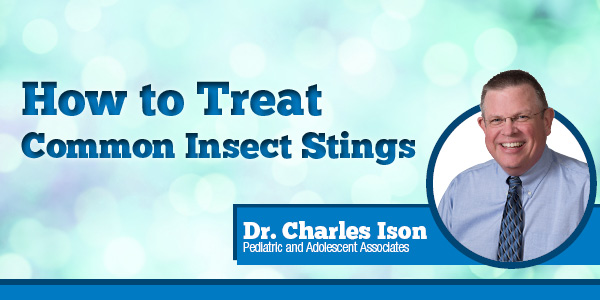How to Treat Common Insect Stings
Many of us have been stung by an insect of some sort, whether as children or as adults.
In the U.S., honeybees and yellow jackets account for most insect stings. Other bees and other wasps, such as hornets, can also sting.
In some areas of the U.S., fire ants and scorpions can also do this.
Most of these stings are mild, but they can make a child miserable and occasionally be dangerous.
The usual symptoms of an insect sting include local redness, swelling, pain, itching, and a small amount of bleeding or drainage at the site.
More severe symptoms of a sting include swelling of the eyelids and lips, tightness and swelling of the throat, tightness of the chest, an anxious feeling, respiratory distress, dizziness, confusion, fainting, rapid heartbeat, multiple hives, nausea, cramping and vomiting.
For a typical insect sting, the stinger (if still present in the site of the sting) can be removed by scraping it out with a blunt object like a plastic card or a butter knife.
The area can be cleaned with soap and water. A compress such as a cloth soaked in cold water or wrapped around ice cubes can be applied.
If the sting is on an arm or leg, it can be elevated to help decrease swelling.
Acetaminophen can be given for pain. If old enough, the child can be given diphenhydramine as directed for the swelling and itching.
Local application of 0.5% or 1% hydrocortisone cream can help make a sting feel better. Calamine lotion may also help give relief.
A paste made from water and baking soda or meat tenderizer applied locally to the sting may also help. A wet teabag may also help give relief.
Those having a severe reaction to insect stings may have an epinephrine autoinjector with them that is to be used for such emergencies.
In these cases, 911 should be called. Tight clothing should be loosened. Covering the person with a blanket may help as well.
If the person is vomiting, he can be re-positioned to help prevent choking.
Steps to help prevent from being stung in the first place include not wearing scents like perfume, not wearing bright colors outdoors, not going barefoot outside, using insect repellent as directed, and not approaching hives or nests.
If approached by a stinging insect, one should remain calm and walk slowly away from it.

